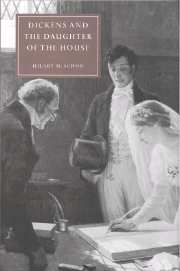Book contents
- Frontmatter
- Contents
- Acknowledgements
- Introduction
- PART I MAKING FICTIONS
- PART II ON NOT COMMITTING ADULTERY IN THE NOVEL
- PART III THE DAUGHTER'S PORTION
- PART IV A VIOLENT CONCLUSION
- 6 In the shadow of Satis House: the woman's story in Great Expectations
- 7 Our Mutual Friend and the daughter's book of the dead
- Notes
- Index
- CAMBRIDGE STUDIES IN NINETEENTH-CENTURY LITERATURE AND CULTURE
7 - Our Mutual Friend and the daughter's book of the dead
Published online by Cambridge University Press: 22 September 2009
- Frontmatter
- Contents
- Acknowledgements
- Introduction
- PART I MAKING FICTIONS
- PART II ON NOT COMMITTING ADULTERY IN THE NOVEL
- PART III THE DAUGHTER'S PORTION
- PART IV A VIOLENT CONCLUSION
- 6 In the shadow of Satis House: the woman's story in Great Expectations
- 7 Our Mutual Friend and the daughter's book of the dead
- Notes
- Index
- CAMBRIDGE STUDIES IN NINETEENTH-CENTURY LITERATURE AND CULTURE
Summary
Many of the stories we have been telling in this book reach a bitter end in Our Mutual Friend. The attempt to locate value in the golden heroine; the attempt to win the daughter a portion of her own; the attempt to free the novel from the darkest toils of the inheritance plot – all, in Our Mutual Friend, notoriously come to dust. Not surprisingly, the end of the novel has garnered as much opprobrium as the conclusion of any Dickens novel, and reflects the problems of closure these final chapters have been tracing: what would be enough; who profits; who renounces; and what is to be done? All problems of closure – value, reward, and the promise of future happiness – seem concentrated in this novel, and seem, moreover, to topple unpleasantly on readers' heads, like so much matter in a finally overfull closet.
The novel begins in an equally concentrated way: a father and a daughter row a small boat across the Thames “In these times of ours”; behind them they tow the body of a drowned man. The plot will expand from these central elements, but it will not add to them: in the course of the novel, two daughters will choose between two fathers and pledge absolute loyalty to them; two daughters will cross the water to find happiness; and two daughters will marry men who have been drowned and found dead.
- Type
- Chapter
- Information
- Dickens and the Daughter of the House , pp. 178 - 207Publisher: Cambridge University PressPrint publication year: 2000
- 2
- Cited by



